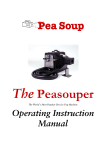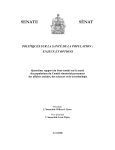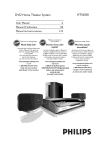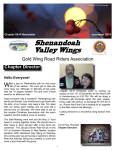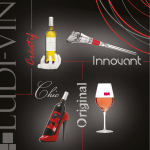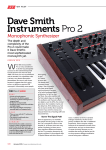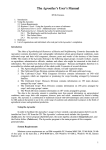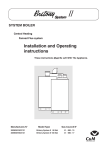Download Introducing LFW Brochure
Transcript
THE WORLD'S MOST RESPECTED SCOTCH WHISKY SPECIALIST Inside: Your guide to the great world of Scotch Whisky Finished? hogshead? unchillfiltered?Your questions answered The Flavour Map find your next whisky www.LFW.co.uk mail-order and internet made easy Loch Fyne products best procurable ! e m lco e W INTRODUCING LOCH FYNE WHISKIES INTRODUCING SCOTCH WHISKY Loch Fyne Whiskies is a small privately owned shop in Inveraray, a popular visitor stop in the West Highlands of Scotland. Established in 1993, the business is owned and managed by Richard & Lyndsay Joynson with a superb team of knowledgeable staff and is not part of a chain, has no shareholders to satisfy and does not have any branches (we hear mutterings of ‘one centre of excellence’). Scotch Whisky is unique. Malt Scotch Whisky doubly so. Visitors to our shop enjoy the unique atmosphere and service and most get to do some sampling from our extensive tasting stock before they buy. Half of our business is mail order, delivering good Scotch Whisky all over the world. Our (much imitated) web site LFW.co.uk is acclaimed and thought to be groundbreaking by virtue of its simplicity! If only we could give real tastes rather than virtual tasters on-line. We pride ourselves on our attention to our customer requirements; principally sound knowledge of our products, a fair price for our goods and a top class and speedy mail order service. In 2000 Richard was inducted (induced?) as a Keeper of the Quaich, a unique organisation that recognises those who have contributed to the good standing of the Scotch Whisky Industry. In 2002, at the inaugural Whisky Academy awards organised by Whisky Magazine, members of the whisky industry voted us ‘Retailer of the Year’, a title bestowed again in the first vote by the magazine’s readership in 2004. Since then we have always featured either as a winner or runner-up. In 2008 www.LFW.co.uk won the first ever on-line Whisky retailer award—and again in 2009! Our ongoing attention to quality is reflected in our service, value and our own Loch Fyne products described here. Our customers are worldwide, very loyal and very much appreciated. Welcome! It is said of careers in our industry that ‘once you start in Scotch you can never leave’. So engrossing is the subject and completely unlike any other industry or interest. All of the people involved in Scotch are proud of the product, very protective of its quality values and, with 500 years of heritage, part of a long dynasty. Newcomers soon get to appreciate this is a special subject and in turn become guardians of something as exceptional and unique as Scotland itself. Scotch whisky is Scotland, and Scotland is Scotch. Quality, heritage and—most important—flavour. The enjoyment of good Scotch is not an alcohol based experience. Binge drinking on 10 year old Glenmorangie is not considered priority by a government alarmed by our perceived collective dependence on drink. Drinking Malt Scotch Whisky is an experiential undertaking of aroma, flavour and contemplation with or without company. Scotch drinkers are mature individuals enjoying a drink suited to cogitative enjoyment and it’s clear that younger drinkers tend to choose Scotch last. We have to develop a palate for Scotch. Only as we approach our thirties has the palate developed an appreciation, so if you tried Scotch a while ago and were not impressed, why not have another wee sniff and sip again? We delight in revealing the delights to those who until now thought they “did not like the stuff”. Quality, heritage, flavour—and complicated. No not really but it certainly is complex—in terms of the flavour, history, presentation and the people involved. But it is not complicated for a consumer if she (or he) can spare a few moments to get to grips with a few basics; and that is what this publication is all about. Once you have read it you should be able to order a Bunnahabhain with the confidence that it is the ideal dram for you at that moment and also that your companion should have a Busty Nail. So whether this is your first Scotch Whisky read or if you have already learned it all—welcome to our party. INTRODUCING YOUR LFW TEAM Richard Joynson, Laura Simpson, David Radcliffe, Hamish (our Iconic Man and Greeter), Andrew Smeaton, Lyndsay Joynson and Andy Burns. Enjoy your Scotch, its quality, the range of flavours and styles—but not so much the quantity; it’s potent and addictive (at this point it has become tradition to mention the website www. drinkaware.com). “A nice shop with great music and an outstanding range of malt whiskies, an excellent mail order business with a straightforward, rel THE LOCH FYNE BLEND "The Malt Drinker’s Blend" Our exclusive Blend is described in the Collin’s Whisky Book as the “malt drinker’s blend”, and by Whisky Magazine as “a wee cracker”. It’s unique, smooth & mellow, slightly sweet and slightly smoky, pleasing all palates and many non-whisky fans as an easy-drinking, well flavoured whisky; something to drink and enjoy rather than concentrate on. How's this for a tasting note? "The deep amber colour of this whisky, (darker than many blends) implies age and this is supported by the (undilute) nose, which is rich and vinous, with no trace of grain. All the indications of mature fillings. There is an interesting aroma of apple dumpling (suet crust), and this remains when water is added, enlivened by lighter citric notes (oranges and tangerines), and by some oil-related aromas (walnuts, linseed oil). Phenolic notes are slight, and express themselves more as ‘roast meat’ than peat smoke. Medicinal phenols are present in a very slight trace of oilskins. Overall the nose is subtle and relatively closed. Not much water is needed. The mouth-feel is smooth and well balanced, engaging the whole palate with acidic, salty, sweet and dry flavours, and coming down ultimately on the side of sweetness. The overall impression is fresh and smooth—mellow without being flat. The finish is quick and clean, and surprisingly warming. It is extremely easy to drink. Conclusion: A true premium blend which has clearly used well matured fillings. There is no harshness in it, no cereal notes or feints, no artificial caramel notes. A whisky which is appropriate for any time of the day. Perilously smooth, mellow and easy to drink.” Thank you Charles Maclean Soon after its launch The Loch Fyne won the bronze award in the blended whisky class at the influential International Wine & Spirit Competition. The Gold Medal went to the world’s top selling Scotch, Johnnie Walker Red Label. THE LIVING CASK™ Our unique recreation of the traditional storing and serving of malt whisky. Sitting on the counter in the shop is a barrel of malt whisky with a tap half way down. When the level gets down to the tap, we add more whisky. The new malt perks up the residents which mellow the new, a constantly changing malt whisky! Our Living Cask is the first blended malt ever to win an award by the respected Malt Maniacs judging panel—a silver in 2006. So rare it only comes in a 20cl bottle, find out more at LFW.co.uk THE LOCH FYNE SCOTCH WHISKY LIQUEUR A luxurious mix of 12 years old Scotch Whisky with flavours of chocolate, orange and tangerine it is less sweet than almost all liqueurs (a consequence of higher alcohol than most—40%). Loch Fyne Liqueur has a depth and complexity normally found in a good malt whisky but very rarely in a liqueur. Apart from the natural flavourings that we put in many people detect coconut, coffee, aniseed, banana and more! All in a changing and complex experience. The silver medal winner at the 2005 International Wine and Spirit Competition it is handsomely presented in a 70cl decanter bottle, it mixes well too. One of our great delights about the liqueur is that many of those who (think they) don’t like whisky appreciate it immediately and all of those whisky fans who ‘don’t do liqueurs’ enjoy it too! Our favourite trick is to mix it equally with another whisky: with a decent blend all the sweetness goes, with a malt the flavours of the malt mix elegantly, most famously a ‘busty nail’ with a measure of the smoky-peaty monster Laphroaig. We have many cocktail suggestions, ask for a sheet or check www.lochfyneliqueur.com liable website, a real sense of customer care, a genuine passion about the whisky sold and bucketfuls of attitude” — WHISKY MAGAZINE “The wonderful thing about whisky, apart of course, from drinking it, is that it contains more bluffing elements than almost any other subject—far more than supply-side economics, more even than wine. Wine breeds envy, discord and snobbery, whisky promotes fellowship, amiability and quiet, unassuming superiority. Supply-side economics produced Donald Trump.” David Milstead Bluffer’s Guide to Whisky LFW’S QUICK WHISKY GUIDE The busy summer season in our shop gives us the chance to welcome new customers to our growing band of happy whisky fans. These pages are for those who are developing an interest in the marvels of Scotch Whisky. We feature some explanation of the bottlings from our Stock List—OB, Ind., G&M, DT, S etc., but we’ll start with by far the most often asked question: I can’t remember the name but it came in a dumpy green bottle, can you help? Bunnahabhain! (Boo-na-ha-venn). What is whisky? Literally the alcohol spirit produced by distilling fermented cereals. Whisky is produced in many countries, historically those with climates more suited to growing cereals rather than grapeinto-wine production. Scotch Whisky is the world’s most popular spirit and by law must be (amongst other things) made and matured in an oak barrel for not less than three years in Scotland, otherwise it cannot be called Scotch. It must also be bottled at 40% alcohol or more in order to retain flavour—see the note on how to drink. How is whisky made? Easy—mix some processed grain with water, add yeast and let it ferment in the same way that beer is produced. Boil up your beer and collect the steam which will be mostly alcohol. Voilà, whisky! Throw this away as it is probably poisonous, you will go blind, your hair will fall out—and it’s illegal. Scotch whisky must contain barley and Malt Whisky must be made exclusively from water, malted barley, yeast and nothing else. Maturation (which is the biggest contributor to flavour) must be in oak, traditionally former sherry or bourbon casks. What is the difference between a single malt and a double malt? A single malt is the product of one malt whisky distillery and that one distillery only; it is produced by a complex and cumbersome batch process that makes accountants really squirm. There is no such thing as a double malt unless you are with your rich father-in-law at the bar (technically termed ‘a large one’). Single malts attract great acclaim; they are no longer Scotland’s biggest secret. Their intensity and complexity of flavours, previously thought to be a handicap to wider sales, are now being sought throughout the world. Single Malt whisky is one of four types of Scotch. The most common is blended whisky, a mix of many different malt and grain whiskies prepared by a blender using his sense of smell and years of experience. 95% of all bottled whisky sold is blended whisky and it is appreciated the world over for its satisfying subtlety and complexity. Grain whisky is an accountant’s kind of product; industrially produced in an efficient, continuous process from a variety of cereals sourced from around the world—but always including a measure of malted barley (for bio-chemical reasons). This spirit is not fully distilled; a degree of impurity is required to add character—by law. Occasionally you may come across a bottle of single grain whisky (which will taste light and slightly oily) but grain is used mainly as a carrier for malts in blends. The fourth category of whisky is a vatted or ‘blended’ malt which is a mix of several malts but no grain. Malt bottles lacking the word ‘single’ may well be vatted; other clues are ‘Pure Malt’ or ‘100% malt’. Some are very good, for example Famous Grouse Vintage Malt, our Bottling of the Year for 2001. A single malt is a happy accident of science, nature and circumstance. Blended and vatted whiskies are one man’s opinion of what he thinks you think a good whisky should taste like. Many members of the industry claim to appreciate blended Scotch the most. Why don’t you stock a certain brand I had once? Whisky brands tend to fade away faster than get created as the industry changes from hundreds of brand owners to just a few. As big companies expand by the acquisition of small, they find that they have two brands on the same shop shelf at the same price so one has to go. Some brands are only available overseas because they are better established there than in the UK. How many Scotch Whiskies are there? 2,234. Actually nobody knows! It could be five times that and there is no way of counting them. Consider the number of small brands (like our own Loch Fyne), supermarket brands, specific market (duty-free) brands which come and go and the task is impossible and pointless. Loch Fyne Whiskies has a most comprehensive range of UK available malts with examples from about 120 distilleries. There are currently about 85 open and working; others are either mothballed, closed or demolished. There have been about 750 distilleries licensed since Ferintosh in 1689. OFFICIAL, OWNERS OR ORIGINAL BOTTLINGS (OB) When bottled by the owner of the distillery, we call such bottlings official, owners or original bottlings (OB). These are examples of the best in quality, packaging and design. Here is a range of OB Bruichladdichs from the last twenty years including limited editions, ceramic bottles, wooden boxes and, at the front the most recent with shiny metal tins (inspired by LFW as it happens...) How am I supposed to drink my malt whisky? How you like! Although it does seem a shame to mix a £ 35 malt with a sweet, fizzy mixer. Addition of water (anything from a drop to 50:50, depends on the bottling) often reveals more character. The main compounds responsible for flavour (congeners) in whisky are very soluble in alcohol but less so in water. At bottling strength 40% or above, these congeners remain locked in the solution (hence the minimum 40%alc. bottling law, agreed by wise men to preserve quality). When water is added, the congeners become less soluble and are released as vapours into the atmosphere. So experiment with dilution for each new bottling. Bear in mind you have four senses of taste and these are on your tongue, not in the back of your throat. Plus you have some 30 or more senses of smell—so use the schnoz. Ice in malts is generally a no-no; you put ice on bruises and in blended Scotch in hot climates. Part of the fun of malt whisky is the testing and breaking of these rules! Try ice! Or mixing two different malts together. How do I know which malts I will like? Most single malts will have the region of origin on the label (either Lowland, Highland, Speyside or Islay) and these give a clue to the character of the contents—but there are many exceptions to the rule. The Lowlands are the most gentle; mild, almost wine-like. The Highlands can be further divided; those from the south are akin to the Lowlands, those from the north are fuller flavoured. Speyside is a category of its own within the Highlands. These whiskies are complex and half of Scotland’s distilleries are found here. The most fully flavoured whisky is produced on the island of Islay (pronounced eyela). Islay whiskies are unguided missiles in the wrong hands— you will either love them or wonder what the attraction is in smelling hospitals. See also the Flavour Map on page 7. How come they taste so different? Malted (germinated) barley has to be dried before milling and fermentation and traditionally this has been done over an open fire. In Scotland a variety of fuels is found locally including peat (decomposing heather) and coal. The amount of peat that is used to dry the barley has a big influence (on Islay it is the only source of fuel). Other influences are the style of apparatus employed in the production, particularly the still and how that still is operated by the stillman. The final major influence is the type of cask or barrel employed to mature the spirit; it could be one of many categories from a brand new barrel to a well-used second-hand ex-sherry or bourbon cask. A recent development in malt whiskies is the production of ‘finishes’ where the whisky has had some of its maturation in a cask that has previously held a wine or port for example. This creates a huge potential for further variety. What are ‘Cask Strength’ Whiskies? Whisky matures in the barrel at about 65%. Typically, prior to bottling it is diluted to 40-43% so as to incur the least alcohol duty (originally a wartime measure). Cask strength whiskies are at natural, barrel strength which provides more impact due to the prescence of more flavour congeners. These whiskies should be diluted in the glass after exploratory sips otherwise anaesthesia will numb the pleasure. Because of the variety of casks employed in the industry, each single-cask bottling will have the character of the barrel variety as well as that of the distillery so there is great variation. What’s this about ‘chillfiltering’? Untreated, whisky at 40% alcohol will cloud at low temperatures. In the mid-1960s, the Scotch Whisky industry introduced a policy of chill-filtering their whiskies to improve clarity and brightness. This prevented quality rejection in (cold) warehouses and clouding when ice is added in the glass. The process is done by reducing the temperature to as low as minus 810°C (typically in malts at plus 2-5°C) then filtering to remove the oils that emulsify at such low temperatures and so eliminating clouding. The process also removes many of the elements of flavour (congeners) from the whisky and now, after the lead set by Pip Hills and the Scotch Malt Whisky Society, many independent bottlings and some official bottlings (e.g. the new Bruichladdichs or Ardbeg 10yo) are increasingly not chill-filtered, a trend that we applaud. Such bottlings should be at least 46%alc as this helps keep the flavour congeners in solution and clear. Where’s Connoisseurs Choice or Signatory’s Distillery? Loch Fyne Whiskies favours a few independent bottlers who buy the malt whisky from a broker or distillery by the cask and bottle outwith the supervision of the distillery owner. Some of these independent bottlers have been trading for over 100 years and now several own distilleries themselves. They provide a rich variety of otherwise unavailable whiskies or ages and are by nature in short supply, there only being 600 bottles from the biggest of casks. With all independent bottlings look for the distillery name which will be in smaller print. For reasons of ‘purity’ there is currently a move away from the use of spirit-caramel colouring in single malts. This is employed to standardise colour in the bottle, (some whiskies can be quite pale,) but in most cases caramel has little effect on flavour. Why are some whiskies so expensive? The first thing to check is the age of the whisky. If it is say 21 years old (the time spent in the cask—once bottled it does not ‘age’) it will be dearer because of the additional storage required. Also whisky evaporates in the barrel by about 2% each year so after 21 years only two thirds remain. The other thing to look out for is the degree of alcohol strength as duty is applied according to percentage alcohol. Most whiskies are bottled at 40% alcohol by volume (abv), some at 43% or 46%— 15% stronger and so dearer than the 40%. We stock many whiskies with strengths of up to 65% so these are the equivalent of over a bottle and a half! Finally there is a collectors’ market for whisky—that explains the more extreme prices! Does a whisky improve or go off with age after bottling? No. Unlike wine, spirits are fixed once in the bottle and there is no benefit or harm in keeping it. You should open and enjoy it as soon as possible! How long can I keep the whisky in the bottle? Unopened, a bottle should stay as good as when bottled assuming the seal is in good condition. Keep the bottle away from direct sunlight, heat or variations in condition. Once opened, oxidation will act on the whisky with a noticeable effect in between one and three years. The balance of characters may change, not always for the worse, but eventually a whisky may become ‘flat’—another good reason for enjoying your dram without delay. Saving the last inch of a very special malt is usually disappointing when finally poured, so enjoy it now! Books are useful sources of information and our recommendations are shown in bold in our Stock List. To keep you up to date visit our website: LFW.co.uk “The proper drinking of Scotch Whisky is more than indulgence: it is a toast to civilisation, a tribute to the continuity of culture, a manifesto of man’s determination to use the resources of nature to refresh mind and body and to enjoy to the full the senses with which he has been endowed.” David Daiches Scotch Whisky, Its Past and Present THE RIGHT TOOLS A traditional whisky tumbler is fine, even a pleasure, for a blended whisky but for malt whisky appreciation there is a better glass for the job. Scotch Whisky is best enjoyed with a glass that will hold aromas, a wide bowl with a tapering rim, Our Speyglass is suited to both blends and malts while retaining the benefits of a tumbler. For concentrating on malts the Glencairn blender’s glass (left) is ideal; as is our professional's classic nosing glass with its generous belly to accumulate aromas and a narrow rim to focus those delights for consideration. We enjoy using our simple water carafe, far less fuss than a lipped jug. We also offer two wipe-clean melamine table mats, one for five tasting glasses with tasting guidance and one with over 400 taste descriptors listed by whisky expert Charles Maclean with an easy to navigate layout. THE INVERARITY OUR HOUSE MALTS These and other tools are at the hardware section of LFW.co.uk COLLECTING WHISKIES Some points to consider, post credit-crunch The Inverarity range is bottled by Inverarity Vaults and all three have been adopted as our ‘house malts’ because of their quality and great value. The three malts, two single and one vatted, complement each other and demonstrate the range of styles in Scotch Malt Whiskies. INVERARITY 10yo The 10yo has been our house malt since 1995. It is an all-day everyday dram which both novice and experienced whisky fans enjoy because of its easy drinking Dalwhinnie/Glenmorangie style; a real example of quality and value. On the Malt Whisky Flavour Map (opposite) we reckon Inverarity 10yo belongs in square B5. INVERARITY ANCESTRAL 14yo For Ancestral—the digestif in the range—Inverarity’s Hamish Martin has selected a 14yo sherry cask matured Balmenach. The whisky is ruby-red, extremely smooth with a great strength and complexity and very slightly sherry-cloying in the mouth; a wonderful after dinner dram. Add a little while preparing a bramble crumble—honest! On the Malt Whisky Flavour Map (opposite) we reckon Ancestral belongs in square I 4. INVERARITY ISLAY 8yo The Inverarity range is completed by Inverarity Islay, an eight year old all-Islay vatted or blended malt made up of four distillery components. A very emphatic phenolic and medicinal character—peat and iodine—classic Islay; a good oiliness, powerful flavours yet also a breeze of fresh air. This is an excellent variation on Islay malts which provokes much debate among Islay fans as to where the four components come from—and we’re not telling! On the Malt Whisky Flavour Map we plot Inverarity Islay in square D9. In the light of the 2008 banker's disgrace Scotch Whisky has risen in investors opinions as a very worthwhile investment, confident of growth and with the dramatic increase in new collectors a sustainable demand for new and old bottlings. Plus! The satisfaction of collecting whiskies holds considerably more pleasure than other collectables as here we have a legitimate and scholarly subject with no less than five hundred years of provenance. So what do you want to collect? It’s a question worth considering early on, otherwise you may create a diverse, confused collection of little merit. The sooner you can focus, the more pleasurable your collection will be. Specialise, create a set of rules and try to stick to it. Generally the thoughts are: malt or blend? (usually malt); only official bottlings or any? (usually OB first choice, then independent if necessary); what top price? (are you prepared to house a lavishly presented rarity, fifty times more expensive than the norm?) One popular choice is to seek a representative of every possible distillery, first choice being the official bottling but it will be necessary to default to independent bottlings in some cases. Others home in on one region or even one distillery. Astute buying of ‘ordinary’ bottlings can do well; as they get repackaged or discontinued they become desirable with time. For premium priced ‘collectables’ the ratio of number of bottles released to price is an important factor. Consider the total number produced. A release of up to 600 uniquely presented bottles is scarce; 5,000 bottles and a sensible price is worthwhile. High quality drinking whiskies are premium to those less appreciated (but often overpriced) drams as many of these will get consumed and taken out of the resale equation. Enjoy your hobby... Don't lose this page, it's your map to find your whisky treasure! THE RIGHT WHISKY "Whisky isn’t complicated, it just needs explaining in the right way". So say the Malts Team of Diageo plc (the largest producer of Scotch Whisky) who, in 2007 produced The Single Malt Whisky Flavour Map which Loch Fyne Whiskies has embraced as a clear and simple way of identifying your next malt whisky adventure. Under the independent supervision of acclaimed whisky writer Dave Broom they are plotting the relative position by taste of their and other producers' single malts. While Loch Fyne Whiskies can't tamper with the map, (that's the job of Dave and the experts at Diageo), we can point at it and now many of our whisky descriptions will refer to the Flavour Map. This Flavour Map means you can now see how Light or Rich and how Smoky or Delicate a whisky is compared to ones you already know, so now you can explore the LFW Stock List with more confidence. Whiskies that appear towards the outer edges of the Flavour Map will tend to have more single-minded character. The more a whisky moves towards the middle of the Flavour Map, the more it tends to have a combined balance of flavour characteristics. THE LFW STOCK LIST Our Stock List has many whiskies which have been annotated with a code. These refer to which part of the Flavour Map we reckon they belong—see the grid below. Our symbol Δ represents an ‘ace’—exceptional whiskies in our opinion. On LFW.co.uk we have attempted to be more specific by assigning a grid reference according to the Flavour Map—see our suggested coordinates for our House Malts on the opposite page. STOCK LIST CODES AND MAP POSITIONING DEFINED COMPLEX or CENTRE Whiskies in the middle of the map exhibiting a balance of all whisky characters (typically Speyside malts). LIGHT / SMOKY (L/S) Typically whiskies in the upper part of this corner have the more medicinal, drier smoke notes. Malts towards the left tend to display simpler almost mono-dimensional characteristics. RICH / SMOKY (R/S) Whiskies in this corner of the map will be the most pungent with rich, sweet peat-smoke notes and bigger bodied. Generally, the further out from the centre of the map, the more intense this character becomes. LIGHT / DELICATE (L/D) On the vertical axis whiskies are plotted by how smoky or how delicate they are (whiskies which contain unpeated barley and have no peat-smoke flavours). This section of the map will tend to account for a lot of whiskies. As malts occupy positions further from the centre of the map, having no peat smoke overtones, the flavour balances are more intricate. Generally, the further from the centre, the more tantalising and elusive the aromas become and the more subtle the flavour. On the horizontal axis whiskies are plotted by how light they are (whiskies with fresh flavours such as green grass, fresh fruits and barley) or how rich (flavours ranging from vanilla and nuttiness to cigar box, chocolate and dried fruit). You might expect a contradiction here – rich and delicate? In reality, whiskies which find themselves here have flavour combinations rather than contradictions; clean sweetness with delicate hints of pine freshness or toffee with hints of pear fruit. The further towards the corner, the greater the contrasts may become. RICH / DELICATE (R/D) Tiny text: The Flavour Map has been prepared with and endorsed by the independent whisky expert, David Broom, together with Diageo Scotland Limited. The Flavour Map features many brands of malt whisky, some of which are owned by and are registered trademarks of Diageo Scotland Limited and some of which are owned by (and may be registered trademarks of) other companies. In addition to the names of individual distilleries listed on the Flavour Map and the Classic Malts words, the Quaich device, the Flavour Map device and associated logos are trade marks. LFW.CO.UK A USER’S MANUAL Lfw.co.uk is designed to be simple and quick but here is a guide to give new users tips and short cuts. Headings here reflect the left hand navigation frame. Tip: if you lose the frame click on the logo in the top right hand corner. NEWS News is the busiest part of the site; although only one page long (broken up for speed) it reflects changes in stock as they happen, updated within hours of arrival. Many customers check this on a daily basis; it takes seconds to learn of any changes. From here you can check prevailing Deals and now (at last) any new miniatures as well. The rest of lfw.co.uk can be considered to be in two parts: Browse & Buy and the rest. BROWSE & BUY This is the major part of lfw.co.uk, where the biggest investment in time has taken place. Browse & Buy is an illustrated catalogue of all our whiskies, books and hardware. It is here that you should check the current availability of an item. The lobby to Browse & Buy has information regarding delivery prices and terms of sale for all destinations so be sure to check these. To continue to the catalogue check the secure option. Ordering on lfw.co.uk is secure and certificated by a respected authority; click the locked padlock on your browser for assurance. Tip: If you have trouble after entry because your computer has security fire-walls in place (should you be doing this from work?) then the unsecure option will give hassle-free access, but you should be cautious about revealing your card details if your padlock is ‘open’. You can still order without revealing payment instructions. At check-out there is the option to print out a completed order form and fax or post it to us with card details added manually. Some of our repeat customers request that we use card details we have on file Tip: Enter “Use card details on file” in Special Requests (below your address details) as you start to check out, then choose ‘Send Separately’ for card details. You can of course ’phone or fax us as normal. Browse & Buy lists prevailing prices and availability with our unique comments that many find enjoyable to browse without buying. Go take a look—no obligation to buy or even show yourself! Tip: Options along the top bar include Review Order; scroll back up and here you can adjust quantity or cancel items before checking out. Check-out tip: Once you have entered your card details, clicking Next> concludes the transaction; there will be no going back. You will then get an e-mail automatically (unless you have given the wrong e-address!) Our practice is to retrieve orders at 10am and 3pm and to despatch that day, (but no guarantees); changes should be ’phoned, faxed or e-mailed (to [email protected]) immediately. SEARCH If you know what you want then the Search function is very useful and very highly recommended, the descriptions for each whisky have been created with this facility in mind. A product or descriptor can be entered with an option of price range. Keywords employed throughout Browse & Buy include, for example: ‘peaty’ or ‘sherry’ / ‘sherried’ etc. ‘ace’—regarding individual bottlings (Δ). ‘high regard’—regarding distilleries. ‘limited’ or ‘collectable’. ‘closed’ or ‘mothballed’. Dates, such as ‘1966’ or ‘34yo’. Specifics, such as ‘46%’ or ‘single cask’. You can also search for those whiskies from the Flavour Map according to map co-ordinates, e.g. D7 or S/R And all our (old) distillery profiles include our unique taste styles record 1 to 5 as explained via 'Tasting ratings Explained' in the top bar. Tip: These can be searched by entering colon+the score you seek —e.g. to view a list of our taste score 2 suggestions then enter :2 (no space). OUR SHOP THE LOCH FYNE (& LIQUEUR) THE LIVING CASK HOUSE MALTS FROM INVERARITY These four sections give information about us and our specialist items. SCOTCH WHISKY REVIEW We no longer publish the SWR but here you can read backissues of our acclaimed whisky newsletter. Other stories are posted here too. CONTACT US Here you can join our mailing list but list members are not pestered; checking our News section each week will keep you adequately informed. We value comments and notification of problems so please keep me informed; either through the comments box or direct. Our email address is [email protected] SITE OVERVIEW If you get lost or bamboozled Site Overview will help you out. Scroll down for quick jumps to various pages within lfw.co.uk— listings, order forms, charges, terms of sale etc. LUDDITE? DISCONNECTED? If you don’t wish to 'twitter', 'bebo' or get on-line at all but do want to be informed, send us a stamped addressed envelope and we will return a printout of lfw.co.uk’s News page. LOCH FYNE WHISKIES, Inveraray, Argyll, PA32 8UD. [email protected] tel. 01499 302219 fax. 302238












